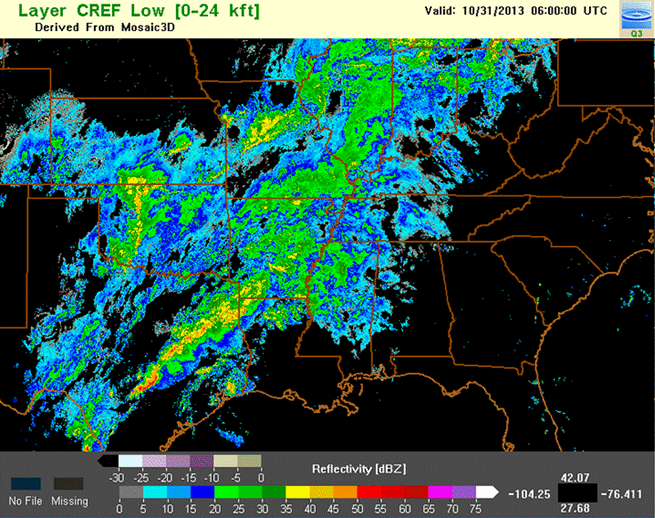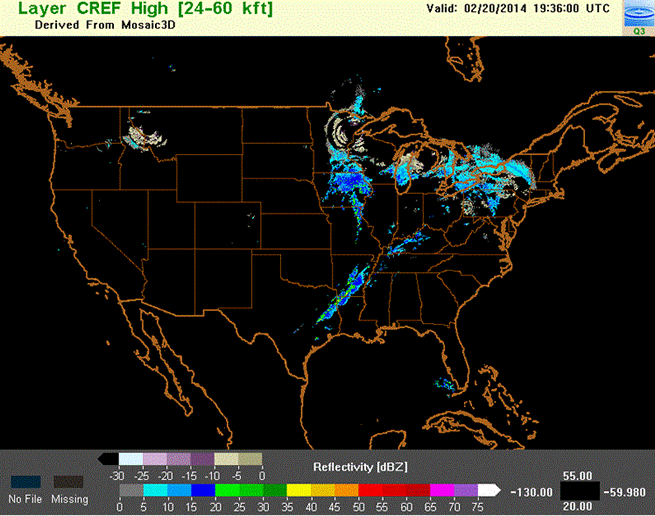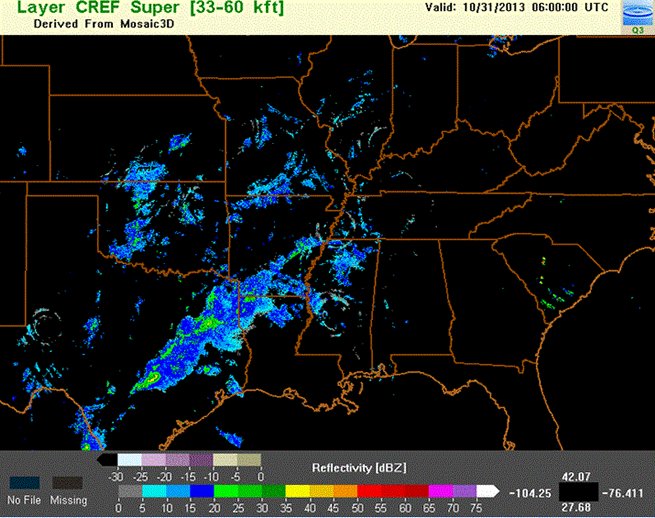Layer Composite Reflectivity - Warning Decision Training Division (WDTD)
Navigation Links
Products Guide
Layer Composite Reflectivity
Short Description
The maximum reflectivity in the column within a specified depth.
Subproducts
Layer Composite Reflectivity Low [0–24 kft]
Layer Composite Reflectivity High [24–60 kft]
Layer Composite Reflectivity Super [33–60 kft]
Primary Users
NWS: CWSU, AWC
FAA: TRACON, ARTCC, ATCSCC, FSS
Input Sources
3D Reflectivity Cube
Resolution
Spatial Resolution: 0.01o Latitude (~1.11 km) x 0.01o Longitude (~1.01 km at 25oN and 0.73 km at 49oN)
Temporal Resolution: 2 minutes
Product Creation
The maximum reflectivity in a column of specified depth, using the 3D reflectivity cube.
Technical Details
Latest Update: MRMS Version 11.5
References
None






